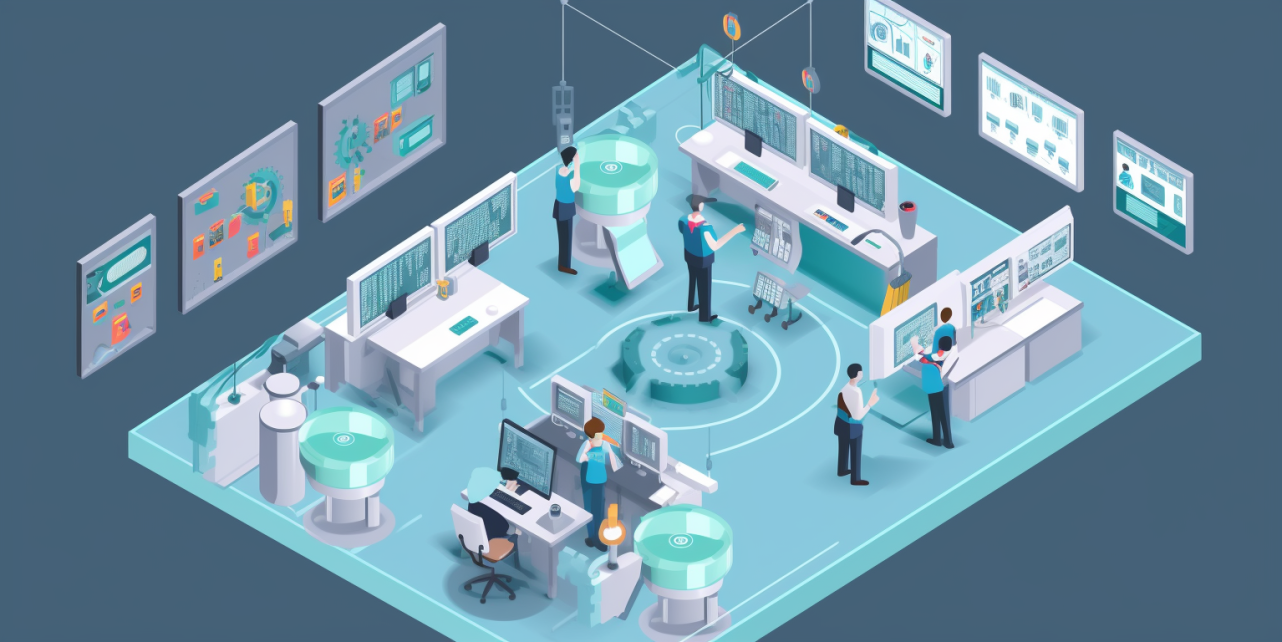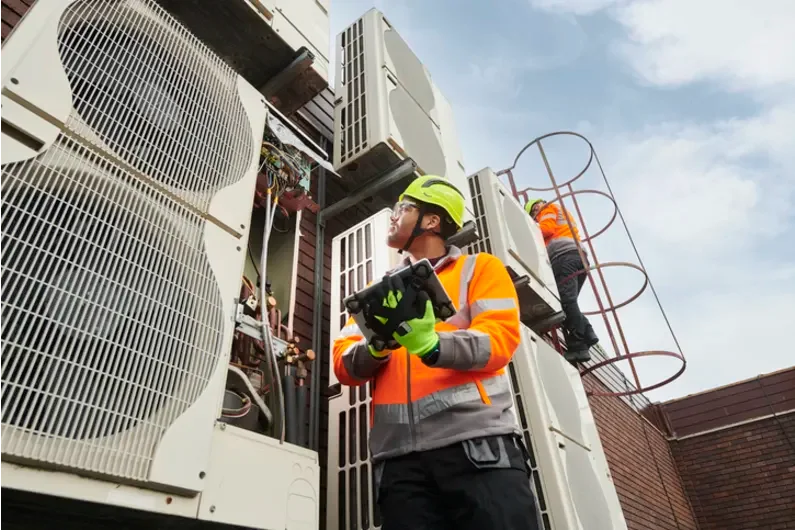A computerized maintenance management system (CMMS) can be a powerful tool for managing the maintenance operations of any business. It is important to understand the various components that make up a CMMS. Generally, the system consists of a database that stores equipment, vendor, parts, and labor information. The database helps users easily locate reliable parts, estimate job costs, and more. Additionally, it typically has an asset-tracking function so that users can track their equipment’s maintenance history in detail, and schedule upcoming maintenance tasks at intervals that are beneficial and cost-effective. CMMS also typically includes a request logging system that allows operators to make maintenance requests due to equipment failure, which significantly streamlines response time and minimizes downtime. Furthermore, a CMMS usually includes an inventory management module which allows staff to track and manage inventory needs and determine what parts are needed for upcoming maintenance sessions. Lastly, a CMMS can provide valuable reports, which provide insightful data regarding labor, parts costs, and equipment maintenance history. Understanding the components of a computerized maintenance management system can help any business reap its benefits and make their operations more efficient.
Database Function of a CMMS System
The database function of a CMMS system is critical to its success. This function stores equipment, vendor, parts, and labor information in an organized manner so staff can easily access them. It also provides a comprehensive and detailed equipment maintenance history, so users can set maintenance schedules at optimal intervals. Additionally, it allows staff to quickly locate reliable parts as well as estimate the costs for any tasks. This data can be used to create reports that contain insightful data regarding labor, parts costs, and equipment maintenance history. This information can be invaluable for businesses when making decisions to improve maintenance operations. The database functionality of a computerized maintenance management system (CMMS) is a necessary component for reaping the rewards of the system. Understanding how to use it correctly can help any business increase efficiency and cost-effectiveness.
Asset Tracking with a CMMS System
Asset tracking is an essential feature of any computerized maintenance management system (CMMS). This feature allows users to identify the maintenance history of their equipment in detail, and schedule upcoming maintenance tasks in an economical way. Asset tracking can be used for checking the inspection history of any equipment, from minor repairs to major overhauls. It also makes it easier to create a maintenance schedule for each piece of equipment, extending its life. Furthermore, asset tracking allows staff to monitor usage and attach costs to those activities. This allows them to forecast when a piece of equipment will need to be replaced, and plan maintenance accordingly. Finally, any associated tracking data can be exported from the CMMS system and used for reports. Asset tracking with a computerized maintenance management system can provide managers with vital information to make the best decisions and save money. Utilizing the asset-tracking capabilities of a CMMS can be immensely beneficial for any business.
Request Logging System of a CMMS System
The request logging system of a CMMS system is designed to significantly streamline response time in the event of equipment failure. This system allows operators to make maintenance requests to the relevant team in a few clicks. This system can be configured to send out notifications when a request has been logged, keeping all parties involved in the loop. Additionally, the system stores all requests in an easily searchable manner and includes a detailed description of the task requested. This allows maintenance staff to quickly assess the request and prioritize their response. Moreover, the system typically includes a way for an operator to track a job’s entire timeline from the moment it is requested, all the way to its completion. Request logging with a CMMS system provides users with an efficient way to manage maintenance requests, and can be the difference between a successful operation and a costly breakdown. Understanding the request logging function of a CMMS system can be instrumental in keeping any operation running like a well-oiled machine.
Inventory Management in a CMMS System
Inventory management is a crucial feature of any computerized maintenance management system (CMMS). This module usually provides staff with the ability to track both used and unused parts required for maintenance tasks. It allows users to view current inventory levels, as well as estimate future inventory needs. This allows users to order parts in a timely manner and avoid overstocking and wastage. Additionally, it allows staff to create ‘min-max’ levels for parts so that managers can be notified when certain parts have dropped below a certain level. Furthermore, the system provides staff with detailed information on each part, such as its cost, source, and estimated usage. Lastly, users can also track repair orders and scheduled maintenance tasks, so that they can be prepared with the necessary tools and parts when needed. Inventory management in a CMMS system allows businesses to accurately track their inventory needs and plan maintenance tasks accordingly. This can save businesses time and money, and allow them to more efficiently manage their equipment maintenance operations.
Report Function of a CMMS System
The report function of a computerized maintenance management system (CMMS) is a key component of any successful maintenance operation. This function allows staff to analyze maintenance-related data and develop insightful reports. Reports can include various performance metrics, such as average job completion time, parts costs, and labor utilization. Moreover, these reports can also indicate areas for improvement, such as inventory levels, budget comparison, and cost analysis. Managers can use this data to make decisions that can improve their maintenance operations. This data can also be helpful when determining the effectiveness of preventative maintenance programs. Reports can also compare labor costs among employees and businesses, and provide an accurate picture of the process status. Finally, the CMMS report function can allow businesses to create estimates for upcoming jobs and proceedings. The report function of a CMMS system can provide businesses with powerful data to make informed decisions about their maintenance operations. Understanding how to use this function correctly can significantly reduce costs and improve efficiency.
Advantages of a CMMS System
A computerized maintenance management system (CMMS) can be an invaluable tool for any business that manages a large amount of equipment. It has several advantages that make it an attractive option for maintenance operations. First of all, it helps businesses be more organized and efficient. This system allows users to store and manage all relevant equipment, labor, parts, and vendor information in one place. It also streamlines communication, by providing users with a request logging system and notifications. Furthermore, the asset-tracking capabilities of CMMS help users keep track of their equipment maintenance history and schedule maintenance intervals to extend the life of the equipment. Additionally, the inventory module allows users to easily manage parts requirements and control inventory levels. Lastly, the reporting function enables staff to analyze maintenance data and generate valuable information for decision-making. Understanding the advantages of a computerized maintenance management system (CMMS) can help businesses make informed decisions in order to improve their maintenance operations.
How to Choose the Right CMMS System?
Choosing the right computerized maintenance management system (CMMS) is essential for any business that wants to manage its equipment maintenance operations correctly. It is important to consider all aspects of the system to ensure it fits the businesses’ needs. First and foremost, the system should be user-friendly and easy to use, so that staff can be up and running quickly. Furthermore, the CMMS must include features that can meet the businesses’ needs. These may include request logging, asset tracking, inventory management, and reporting capabilities. Additionally, the right CMMS should be scalable in order to meet the businesses’ growth. This scalability should extend not only to the number of users but also to the system’s functions and features. Lastly, the system should include customer service options that can provide users with reliable technical support whenever needed. Choosing the right computerized maintenance management system (CMMS) is an important decision for any business. Taking the time to properly evaluate the system’s features and customer service options can make all the difference in its success.
Strategies for Implementing a CMMS System
Implementing a computerized maintenance management system (CMMS) can be a daunting task for any business. There are several strategies that can make the process go more smoothly. First, prior to launching the system, staff should undertake training to familiarize themselves with the various functions and features of the CMMS. This will allow them to use the system efficiently right away. Additionally, maintenance workers should be consulted to ensure the system meets their needs. This can help prevent any issues and ensure the system is easy to use. Moreover, detailed asset and parts inventories should be made before the system is launched, so that data is accurate and up to date. All relevant information, such as contact information and job records, should also be inputted into the database. This will allow staff to make better use of the system. Furthermore, managers should involve potential users throughout the process to identify any potential issues or areas in need of improvement. Finally, the system should be tested thoroughly to ensure it is working properly. Taking the time to implement the right strategies when launching a computerized maintenance management system (CMMS) can help ensure that the process goes as smoothly as possible.
The Future of the CMMS System
The computerized maintenance management system (CMMS) has become an indispensable tool for any business that manages physical assets or equipment. It has emerged as one of the main components of any successful maintenance operation. In the future, this system will become even more powerful as new technologies and features are added. For example, new software features will provide deeper insights into the data so that users can make more informed decisions. Moreover, AI-powered analytics will be used to help identify and predict maintenance needs. Additionally, the system will leverage cloud technology to enable businesses to access information from any location. This will make usage more convenient and allow for real-time communications between maintenance staff. Furthermore, augmented reality (AR) and virtual reality (VR) will become commonplace in CMMS to assist technicians in carrying out complex tasks. Finally, predictive maintenance programs will become a lot more powerful as they become more sophisticated. The future of the CMMS system promises to bring many new technologies and features to the table that can greatly improve the efficiency of any maintenance operation.
Key Takeaways
The computerized maintenance management system (CMMS) has revolutionized the way businesses manage their equipment. Developing an understanding of the components of a CMMS as well as its advantages and strategies for implementation can vastly improve any maintenance operation. First and foremost, businesses need to carefully evaluate the database and asset-tracking capabilities of the system to ensure it meets their needs. A request logging system will help streamline response time and minimize downtime in the event of a failure.
Additionally, the inventory management module is essential for accurately tracking and managing inventory needs. Furthermore, the reporting function allows staff to evaluate data and make informed decisions. Lastly, businesses need to understand the advantages of CMMS, such as its organizational capabilities and cost savings, and the best strategies for implementation. Knowing these key takeaways can make a CMMS system an indispensable tool for any business in managing and maintaining its equipment.



